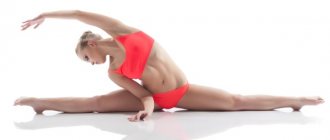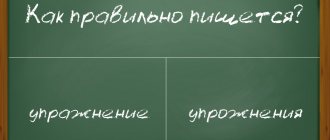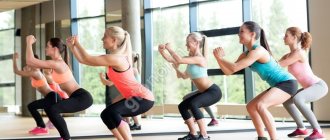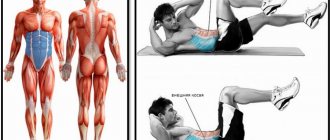Article rating:
Take your first step towards knowledge, sports and solving various problems! How does stretching help you do the splits quickly and does it help you lose weight?
It’s good when there is excellent stretching, because this indicates that you have been engaged in special physical activity, which has been successful. You can always demonstrate it without much difficulty, especially well when you need it for business, for example: for dancing, gymnastics, martial arts and much more.
Stretching as a way to lose weight is used by both professionals and beginners. On its basis such types of sports as yoga, collanetics and stretching are built. By holding the body for a long time in a certain position, the muscles are better saturated with oxygen, lymph flow increases, which contributes to absolute weight loss.
If you are not flexible, but want to fix it, I will be happy to help you with this. In this article, I will describe exercises for weight loss and stretching that will help you do the splits faster, as well as help you choose the right nutrition to speed up the results (this is important for training, because you need elastic ligaments and strong joints).
Why do you need hip flexibility?
First, let's answer the question, why do we need flexibility and mobility of the hip joints?
Firstly, to improve well-being and prevent various diseases. Secondly, to improve stretching and achieve progress when performing various yoga asanas. So, there are several good reasons why it is very important to regularly perform hip opening exercises:
- You will improve blood circulation in the pelvic organs and eliminate disorders of the genitourinary system.
- Get rid of fat deposits in the waist and pelvis area, strengthen the abdominal and lower back muscles.
- You will activate the abdominal area and get rid of stiffness in the groin area.
- Exercises for the hip joints strengthen the spine, help get rid of lower back pain, and prevent the appearance of hernia, radiculitis and varicose veins.
- Regular exercise helps prevent arthrosis of the hip joints.
- If you have sufficient flexibility in your pelvic joints, you can perform cross splits, butterfly pose, and lotus pose.
Olga Sagai offers short, effective sets of exercises for the hip joints. Her videos are short in length (8-15 minutes), so you can follow them after your main workout. Choose the program that is most suitable for you or alternate the proposed classes with each other.
Attention! Throughout your workouts, be sure to keep your back straight and not rounded. If you cannot keep your back straight while sitting, place a pillow under your buttocks. Perform all movements at your comfortable range. Make sure your breathing is smooth and natural.
1. “Stretching for beginners. Opening of the hip joints" (9 minutes)
If you are just starting to work on the mobility of your pelvic joints, then opt for this video for beginners. The lesson includes simple exercises that are accessible even to beginners. The lesson begins with bending, bending and squats in a standing position, and ends with exercises in a sitting position on the floor.
2. “Leg flexibility. Opening of the hip joints" (8 minutes)
Also a simple video, designed for beginners and intermediate levels. The workout begins in a standing position: you will perform pelvic rotation, plie squats and bends. Next you will find exercises in the butterfly pose and in the position of legs wide apart. Finally, you will rotate your legs while lying down.
3. “Development of flexibility of the hip joints” (10 minutes)
This hip flexibility video is done entirely while sitting on the floor. Additionally, you will also stretch the muscles of the inner thigh and groin. Watch your back; it should not round during exercises.
4. “Warm-up for the leg joints. Opening of the hip joints" (12 minutes)
The first half of the workout takes place in the frog pose. In the second half, you will work on joint mobility in the lunge position. The lesson is especially useful for practicing cross splits. With this workout you will also strengthen your hips, buttocks and back, lengthen your spine and sides of your torso, and strengthen and improve mobility in your legs.
The class begins in a sitting position, in the second half you will find exercises in the pigeon pose. With this video you will tone the muscles of your thighs and abdomen, open your shoulders and chest. This complex is not recommended for knee injuries and exacerbation of spinal diseases.
6. “Seated balances. Opening of the hip joints" (11 minutes)
Most of the workout takes place entirely in a seated position. You will perform butterfly pose exercises, including leg raises. You will also find balance asanas, thanks to which you will gain a sense of stability and balance. This activity is also especially beneficial for developing the back and inner legs. Suitable for more experienced practitioners.
The lotus pose has a beneficial effect of cleansing and healing the areas of the legs and hip joints, since blood circulation and oxygen saturation of these areas of the body greatly increases. Also, the lotus position helps strengthen the spine and form a muscle corset. If you want not only to improve the mobility of your joints, but also to learn the lotus pose, then be sure to practice using this video.
Improve your health, increase the flexibility of your hip joints, improve your stretching with Olga Sagay's workouts. Everyone can find 10-15 minutes a day for a healthy body. Have fun!
The main thing is motivation
Anyone can learn how to do the splits. Although there are opinions that not everyone can do this element due to anatomical features, the percentage of such people is not large.
When starting to perform a set of exercises, you need to realize that sports splits are not one of those elements that can be achieved quickly. There are, of course, exceptions, but even with innate flexibility, you will have to work hard to make this element beautifully and technically correct.
The time to achieve results varies individually. This depends on general physical fitness, genetic characteristics of the body, and age. Some will master the technique in a couple of weeks, while others will need several months. But the result is worth it!
According to professional trainers, proper nutrition and yogic breathing (inhalation/exhalation through the larynx helps warm up the internal organs and muscles) will help you achieve your goal faster.
Hip flexion
Hip flexion is a technical term for the change (
) the angle between the hip bone and the pelvis. This movement occurs on either side of the joint when you lift your leg toward your stomach, such as when running, or lean your torso toward your leg when you squat.
If you want to have any chance of performing a deep barbell squat, then you need to have a hip flexion angle of at least 110º-125º. With a smaller range of motion, your body will be forced to make compromises.
According to physiology, limited mobility of the hip joint forces the joints of the lumbar region and knee located above and below it to compensate for this deficiency. In fact, this principle of how our body works resembles a financial pyramid - the stability of one joint ensures the mobility of another.
However, while compensating for the shortcomings of some joints, others take on additional load. So, in the case of squats, lack of mobility in the hip joints puts excessive stress on the back and knees. Such stress is fraught with overload and inflammation for the joints, and for you - a long relationship with an orthopedic doctor.
DETAILS: Pain in the elbow joint, elbow pain
A little anatomy
There are several causes of limited hip flexion: muscle and ligament flexibility, damage to the joint capsule, and structural causes (
Structural problems occur when the femoral head and neck do not fit into the acetabulum (the cup-shaped socket at the base of the pelvis). Most often, this is a consequence of genetic abnormalities, and nothing can be done about it, except to curse the parents for their poor-quality DNA.
However, this problem is often caused by sports such as hockey or long-distance running, which contribute to pelvic displacement. The reasons for such changes are as follows: shortening of the hip flexor and quadratus lumborum muscles, weakness of the gluteal muscles and abdominal muscles. Vladimir Yanda called this disease “lower cross syndrome.”
This type of misalignment causes the lower part of the pelvis to collide with the upper part of the hip bone with each hip flexion. According to Yand's approach, such changes in posture can be corrected using complex therapy. The first part of the therapy consists of stretching and massage, the second - strengthening exercises for the buttocks and lower abdominal muscles.
There are plenty of exercises to stretch your glutes and abdominal muscles, and they don't require a lot of repetitions—just don't skimp on planks, leg raises, bridges, and deadlifts.
The following series of exercises will help you restore mobility to your hip joints.
Hip flexor stretch This is one of the most effective stretching exercises, which for some reason is despised by all bodybuilders. Well, yes, it doesn’t look cool, but is that a reason to refuse the exercise? If you do not have such prejudices, find a bench and just sit in this position for 2-3 minutes.
Relieving tension from the lower back using a “pancake” There are many exercises for stretching the region, but there are very few techniques for influencing its soft tissues. The psoas muscle is located so deep that it is very difficult to feel it with your hands. However, with the help of a regular pancake and some physical effort, you will still be able to work out this stubborn muscle.
Place a plate weighing 15-25 kg on your stomach, slightly moving it from the center of the body, between the ribs and pelvis. It will be good if the contact point is located approximately 5 cm away from the navel and 3 cm below it. So, when you feel pressure on the psoas muscle, lift your leg, this will help target the scar tissue and relieve tension in the muscles.
Problems with tight muscles can be divided into 3 categories. The first is tissue pinching, when compactions form on the tissues. The second is loss of elasticity. Finally, the third category is reduction in muscle length, where the muscle loses sarcomeres and becomes shorter.
Poor elasticity in the hamstrings, glutes, or lower back can limit hip mobility.
Believe it or not, the best way to eliminate tissue pinching is a tennis ball, and rubber bands have a beneficial effect on muscle elasticity.
Stretch the muscles of the back of the thigh The muscles and tendons of the back of the thigh are often subject to stress. So sitting in a chair for 8 hours literally flattens them into a flat cake, and this usually leads to a lot of problems. To relieve tension in this area, place a ball under your thigh and then sit on something hard, such as the floor. Roll on the ball, moving it back and forth across the back of your thigh, relaxing your muscles.
Stretch the muscles of the back of the thigh. Attach the rubber band as in the video. Lie down in front of the counter and place your foot through the free end of the band. Keeping your leg straight, begin to lower it towards the floor and then slowly return it to the top, controlling the movement. Under eccentric loading, the hamstrings and tendons will stretch, thereby increasing elasticity.
How to do the cross splits at home: basic rules
Many people find it convenient to train at home and it is quite possible to master cross splits at home. The main thing here is to try to make all movements as smoothly and carefully as possible. It is possible to choose the conditions for training - silence to help you concentrate, relaxing music, or a TV running as a background.
Regular training is also one of the components of success. Very infrequent exercises, or vice versa, too intense ones will not lead to the desired result. It is recommended to spend about half an hour a day training. It is optimal to do stretching in the morning and evening.
Rules for mastering the cross split stretch at home:
- Before stretching, the body must be warmed up. This can be achieved by doing a little cardio for 15 minutes. If you neglect this rule, you can get injured ligaments and muscles. In warm conditions, the ligaments stretch much better.
- The load must be static. Stretching occurs over time. Having reached the maximum possible level when stretching, it is worth fixing the pose for a while. At first 30 seconds, then it can be increased to several minutes.
- Breathing must be controlled - inhalations and exhalations should be deep and even, without delay.
- A slight burning sensation in the muscles and ligaments is normal, but if you experience noticeable discomfort or pain, it is recommended to interrupt the activity and reduce the intensity. It should be noted that during the exercises there should be no dizziness or other deterioration in well-being.
Additional joint mobility
Another reason for limited joint mobility is the hardening of the joint capsule. Like all synovial joints, the hip joint is surrounded by a membrane (
), which provides the hip joint with protection from damage and acts as a shock absorber. This shell is called the joint capsule. It plays an important role in joint mobility. When the capsule becomes rigid and dense, it begins to put pressure on the rounded part of the joint, distorting the additional mobility of the joints.
Additional or extended movements in the plane of the joint capsule are necessary to properly perform physical movements such as hip flexion or abduction. For example, to avoid collision between the outer joint capsule and the psoas tendon, flexion of the hip muscle must accompany the sliding of the femur. Without this, the joint will put pressure on the capsule and on the tendon.
In sports, many exercises are aimed at increasing the range of motion of muscles and joints. Techniques that provide enhanced joint mobility are very specific. When using them, it should be taken into account that the pressure on the joint should be applied at an angle in order to specifically create additional mobility of the joint, stretch the capsule and reduce pressure on the surrounding tissues.
Hamstring Stretch Band Exercise Place a band over a squat rack. Make a loop. Put it on one leg and pull it towards your pelvis. Step away from the counter to allow the band to tighten. When there is enough tension, put the leg with the band forward and move your free leg back. Place your hands on the floor, bending both knees. Then, without lifting your hands from the floor, begin to straighten your knees as much as possible. Do 15-20 times.
DETAILS: How to clean joints with folk remedies
Forward Bends with Band Take the same position as in the previous exercise, but this time keep your legs straight, bend forward, try to reach the toes of the foot in front. Push your hips back toward the counter as you lean over. Repeat 15-20 times.
Squats with Band In this exercise, the band is in the same position, around the top of the leg, but the attachment on the rack is lower (about 15-20 cm from the floor), so the force will be directed down and back. Step away from the rack, thereby increasing tension, and do 10-15 full squats on each leg.
Who should not do the longitudinal splits?
- Inflammatory diseases of joints and muscles. Especially when the disease is in the acute stage. Additional stretching in such a situation can lead to injury and the development of illness.
- Arterial hypertension (chronic high blood pressure). We cannot categorically state that in the presence of such a pathology it is impossible to do the longitudinal splits. But we strongly recommend that you consult with your doctor before starting training. He can give recommendations on how to properly approach training in this case.
- Injuries of the pelvis and spine. Various cracks and dislocations are especially dangerous. In such situations, training should be postponed until complete recovery.
- Postoperative and rehabilitation periods. Some people who have undergone various surgical interventions or serious illnesses strive to return to an active lifestyle as soon as possible. Slow stretching gives them the illusion of a safe form of exercise. But remember that even this can harm a fragile body. It is better to postpone the start of training until complete recovery.
Fascia
Those. fascia is a kind of cover, a “stocking” for muscles and internal organs, giving them shape. Bodybuilders and bodybuilders are very concerned about fascial stretching, since in many ways it is the fascia that limits muscle growth. In most people, the fascia is thick and difficult to stretch, and only a few have the opposite. Bodybuilders stretch the fascia using the pumping method, or maximum pumping of the muscles with blood: when loaded, the muscle swells with blood and stretches the fascia covering it.
By the way, the bad news: with constant (for example, background, unconscious) muscle tension, of which almost any person has plenty, the fascia tightens over time, shortening the muscle. But stretching it back is very difficult. What to do if you don't want to become a jock? In general, the fascia also stretches when performing muscle stretching exercises. Since it has a kind of shape memory, over time it will adapt to the new shape of the muscle and remember it.
There is also a technique called muscle-fascial release and myofascial release. I would say that these are special types of massage or even manual therapy performed by a qualified specialist, a doctor. This is a fairly effective way to relieve the effects of uncontrollable spasms and muscle tension.
In addition to medical assistance, there are techniques for self-myofascial release (for example, here you can find a description of some exercises). For the limbs, I personally came across the following exercises from the arsenal of dance movement therapy: various shaking. You need to try to “shake out”, throw out the most relaxed limb, for example, a hand, from the joint in different directions.
Psychology
Psychological state and state of mind play a very important role when stretching. I have already written about this aspect earlier in this article. Somehow it turned out that this was the first thing I paid close attention to, starting targeted training to achieve the coveted split. Yes, and it was difficult not to see the difference in the result in a panic state of “AHH!!! HURT!! ENOUGH!!!!
Personally, I consider the right psychological attitude to be almost the main factor in achieving success in stretching. By the way, in the book “The Science of Flexibility” by Michael J. Alter, which I mentioned at the very beginning, despite the general physiological focus, there are very remarkable inclusions of information about the effect of stretching on the brain and body from the point of view of shaping mood and behavior (the release of certain substances into the blood , addiction, pleasure, etc.).
In one book (Tsatsulin Pavel “Stretching by Relaxation”) I read that there is a close connection between the limbic system, which is responsible for emotions, and the neural network that controls muscle length and tension. Anxiety, fear and pain reduce flexibility. It was also written there that the suspended transverse twine is an act of faith (in one’s strengths and capabilities).
conclusions
The right, positive attitude, strong muscles, collagen replenishment of the body, respect for joints and perseverance in exercise will help you achieve your goals in the shortest possible time. I wish you faith in yourself and mastering any splits!
________________________________________________
PS. Yesterday I had a significant day: I did the splits (left longitudinal) for the first time on my own, without the help of a coach. Although it’s a little crooked, I’m so glad! I accept congratulations. :O))
UPDATE
Correct longitudinal twine. Recommendations from experienced athletes and coaches
At the end of the article, I would like to talk about the advice that famous instructors give to all beginners. Please read this information carefully, it will definitely be useful to you:
- Classes must be regular. Don’t think that a few hours every two or three days will be enough to do the splits. No, it’s better to stretch for 10-20 minutes several times a day. Only this will guarantee a quick result.
- Be sure to warm up before starting your workout. We have already mentioned this several times, and we will repeat everything again so that you remember better. Do bends, squats, hula hoops - whatever you want, as long as such activities are beneficial.
Any place is suitable for training, even the beach
- Do not drink hot drinks or heat the bath an hour before stretching. It's better to rinse off in the shower.
- In a cool room, wear leggings, socks or warm ones. Warmth and optimal conditions will reduce the risk of injury and cramps.
- Group your daily list of exercises so that half of them are aimed at dynamic swings, the second - at static poses.
- Always keep your back straight! Correct posture is the key to success and performance.
- Know how to relax after sports. This will help your muscles not become overextended.
- Inhalations and exhalations should be smooth, not deep, without delays or difficulties.
- Do not overdo it! It is better to comprehend the capabilities of your body gradually, without sudden strains and painful sensations.
- Diet and psyche. A harmonious lifestyle is the beginning of all beginnings. Without it, there will be no effect even from the most difficult exercises. Any work will go down the drain if you don’t take care of proper nutrition. Eliminate meat from your diet; eating it causes the ligaments to become rough and difficult to stretch. Drinking a large amount of water per day, on the contrary, makes them more elastic and flexible.
Many experts claim that people with a certain resistance to stress achieve their desired goals faster. They easily adapt to circumstances, get used to innovations, and cope well with physical activity. And for those who are sensitive to any change in their usual rhythm, training will be much more difficult.
Advice! Get a good night's sleep and take sleep seriously. The right routine will help you not only do the splits, but also completely change your life. As you know, lack of sleep causes problems with nerves in the form of frustration and irritability. It has been scientifically proven that among the entire mass of people susceptible to depression and panic, 85% are those who constantly do not get enough sleep.
You should also avoid drinking strong alcoholic drinks. Firstly, they are very high in calories, which means they are contraindicated during a diet, and secondly, the morning after the party you are unlikely to want to stretch properly.
Make your body perfect!
Longitudinal splits are a simple exercise for stretching muscles. This acrobatic sketch is accessible to every woman, regardless of age and physical condition. The only difference is the duration of the preparatory course, genetic characteristics and your skill.
Starting position sitting
- Tree pose (Vrksasana) is very common.
The pose is designed to develop the ability to maintain balance. This pose is good for warming up the hip joints. The emphasis is on one leg, and the other needs to be bent at the knee and rested on the inner thigh of the supporting leg, trying to raise the heel as close to the pelvis as possible.
Asana for beginners
This exercise involves the gluteal muscles: applying pressure to the supporting leg helps stretch the adductor brevis, longus, and pectineus muscles. By moving the knee to the side, you need to create tension in the gluteal muscles and put the necessary load on the pelvis, due to which they open. When performing the exercise, you need to keep the muscles of the supporting leg tense so as not to put excessive stress on the knee. Tree pose asana develops the pelvis and back, improves the mobility of the joints of the upper and lower extremities.
Garudasana asana also develops balance. Bend one leg at the knee, and the other should wrap around the supporting leg, the foot of the raised leg bends behind the shin of the other leg. Then you need to curl your arms in the same way. During the exercise, a complex process occurs in which a large load is placed on the piriformis muscle, the muscles of the buttocks and the obturator muscles of the thigh are stretched.
- Warrior Pose (Virabhadrasana)
DETAILS: Treatment of joints with pine buds - Treatment of Joints
The asana helps open the joints of the pelvis and stretch the ligaments of the groin area. One leg bends at the knee and the other is pulled back. The angle of inclination of the thigh relative to the position of the lower leg should be 90°. With the hand opposite to the bent knee, you need to grab your thigh and clasp your hands behind your back. The hip joint of the bent leg rotates outward, and the other leg helps stretch the groin muscles and open the pelvis.
A stable position when performing the exercise helps to maintain the force of gravity exerted on the working leg. The knee joint of the extended leg will rotate outward, so it is necessary to maintain this position as long as possible. Virabhadrasana helps improve the health of the pelvic organs and strengthens the legs.
The pose engages the inner and outer thighs, relieves discomfort in the back and strengthens the pelvic muscles. The legs are spread apart to the width of the shoulders; when performing the exercise, it is important to turn all the joints slightly inward. This asana is suitable for warming up before other, more intense exercises.
To prepare for the main exercises to open the hip joints, rolls from foot to foot are performed. After this exercise, the joints become more mobile, and blood supply to the pelvic area improves.
The exercise involves the quadriceps muscles of the thighs, piriformis, and stretches the muscles of the buttocks and lower legs. When performing the exercise, the body weight is transferred from one foot to the other.
To increase the load, keep your pelvis closer to the floor. Active exercise helps stretch the back muscles and improves blood supply to the internal organs.
- Angle Pose (Upavishta Konasana)
In this pose, the hip joints rotate outward and bend, the back and back of the legs are stretched, and the pelvic muscles are stretched. To perform the exercise, you need to sit on the floor, spread your legs as far as possible, grab your feet with your hands, and try to touch the floor with your chin. When performing the asana for the first time, you may feel cramps in the gluteal muscles.
Their fibers are quite short, and when stretched, a large load is placed on them, as a result of which cramps can occur. Your feet should be pressed to the floor, trying not to let your knees bend. The feet should be vertical, while the calf muscles receive maximum stretch, and the hip joints maintain the correct position. The asana must be performed with caution, as there is a high probability of spraining or tearing the ligaments.
- Staff pose (baddha konasana).
To sit in the pose, you need to bend your knees and bring your feet together. At maximum stretch, your thighs should touch the floor and your heels should be pressed toward your groin. During the exercise, you need to keep your back straight so that the hip joints bend, and not the spine. The feet can be turned upward, but it is worth remembering that this can easily injure the ligaments of the knee joints, which are weakly stretchable.
You need to stay in the pose for a few minutes. If you wish, you can rest your hands on the floor behind your back. Baddhakanasana asana has a beneficial effect on the bladder and helps with kidney and prostate diseases.
- Cow Head Pose (Gomukhasana)
This asana improves the mobility of the shoulder and hip joints. In a sitting position, you need to put one knee on top of the other and bring your feet back. The hands are placed behind the back and locked into a lock. This pose helps rotate the hip joints outward and helps stretch the muscles of the buttocks, thighs and piriformis muscles.
- Monkey King Pose (Hanumanasana)
This is a difficult asana that requires serious preparation. Almost all muscles are involved in the exercise: the back of the thighs, gluteal, calf and internal pelvic muscles. The joint of the leg extended forward turns inward, and the knee joint extends as much as possible.
The opening of the joints occurs in different directions, so the asana is classified as an exercise of increased complexity. During Hanumanasana, a large load is placed on the groin area, the ligaments of this area are greatly stretched. The arms are stretched upward, while the spine is stretched. The asana must be performed regularly, only then can one expect positive results and the pose getting closer to its ideal appearance.











